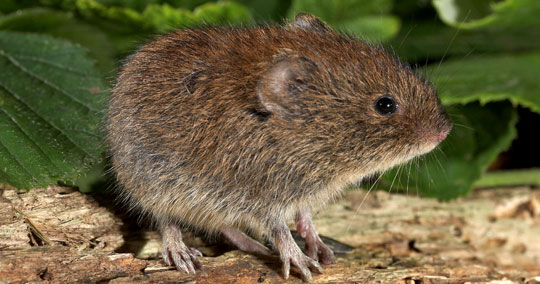Comprehensive Vole Pest Control Services in Utah
Comprehensive Vole Pest Control Services in Utah
Blog Article
Comprehensive Overview to Reliable Vole Parasite Control: Invasion Identification and Therapy Methods
In the world of reliable pest control, vole invasions present an unique difficulty that requires a critical approach. By exploring the nuances of vole habits, recognizing key indicators of invasion, and examining an array of control options, one can establish a detailed strategy to fight these evasive parasites.
Understanding Vole Behavior
Vole habits is characterized by their tunneling behaviors and rapid recreation prices, making them a challenging bug to regulate effectively. These tiny rodents typically develop complex passage systems underground, utilizing them for shelter, food storage, and transportation. Voles are herbivores, consuming a variety of plants, roots, bulbs, and grasses, which can cause significant damage to yards, orchards, and grass. Their quick reproductive price additional complicates control efforts, with women with the ability of generating numerous clutters in a solitary year, each consisting of several children.
Voles are most active throughout the early morning and night hours, spending most of their time foraging for food. Their delving habits not only interrupt gardens and lawns but likewise make them testing to identify and remove. Recognizing vole actions is vital for effective parasite control techniques. By identifying their burrow areas, monitoring feeding locations, and executing targeted control techniques, such as trapping or habitat alteration, vole infestations can be managed successfully.
Signs of Vole Invasion

Avoidance Strategies
Executing reliable prevention strategies is essential in reducing vole infestations and safeguarding plant life from their devastating feeding routines. To stop vole invasions, it is important to start by eliminating possible food resources and shelter.
Frequently examining the building for indications of vole task, such as paths and burrow openings, is vital for very early discovery and punctual action. If vole activity is thought, take into consideration making use of traps or repellents tactically put near their paths.
Non-Lethal Control Approaches
To effectively manage vole populations while focusing on gentle techniques, non-lethal control approaches offer useful options for lowering vole damages in landscapes and gardens. One effective method is using physical obstacles such as hardware fabric or cord mesh to protect prone plants. These obstacles can be hidden at the very least 12 inches deep and bent at a 90-degree angle to avoid voles from delving underneath. Furthermore, environment alteration can discourage voles by minimizing their favored food resources and hiding spots. Preserving a well-mowed grass, eliminating particles, and keeping greenery cut can make the setting much less enticing to voles.

Lethal Control Options
One efficient technique for addressing vole invasions in yards and landscapes entails the calculated use dangerous control choices. When confronted with a severe vole problem that non-lethal techniques have fallen short to have, applying dangerous control steps comes to be crucial. One commonly employed lethal control choice is making use of snap catches. These catches are designed to rapidly and humanely eliminate voles upon activation, making them a preferred choice for numerous garden enthusiasts and landscaping companies. To increase the effectiveness of snap traps, it is suggested to position them in locations where vole task is high, such as along runways or near burrow entrances. One more dangerous control option is the usage of hazardous lures specifically created to target voles. These baits have poison that is ingested by the voles, leading helpful site to their ultimate demise. However, caution needs to be worked out when making use of harmful lures to avoid harm to non-target pets or pet dogs. Generally, when using dangerous control choices, it is important to do so sensibly and based on neighborhood laws to effectively manage vole infestations.
Conclusion
In verdict, efficient vole pest control find out this here calls for an extensive understanding of vole actions, identification of indicators of invasion, execution of prevention approaches, and use of both non-lethal and lethal control techniques. By combining these techniques, individuals can successfully manage vole populations and shield their property from damage. It is vital to deal with vole problems quickly to protect against further concerns and minimize the effect on the surrounding setting.
Provided the detailed tunnel systems and fast recreation rates particular of voles, identifying the signs of vole invasion becomes vital in reliable pest control. One of the main indications of vole presence is the existence of surface area paths or tracks in yard or snow, usually concerning 1-2 inches broad, developed as voles travel between their burrows and food resources.To efficiently take care of vole populations while prioritizing gentle methods, non-lethal control methods provide sensible solutions for minimizing vole damage in yards and landscapes.One effective approach for resolving vole invasions in gardens and landscapes entails the critical usage of lethal control options. vole control utah.In conclusion, reliable vole parasite control calls for a thorough understanding of vole actions, recognition of indications of invasion, implementation of prevention strategies, and utilization Go Here of both non-lethal and dangerous control techniques
Report this page